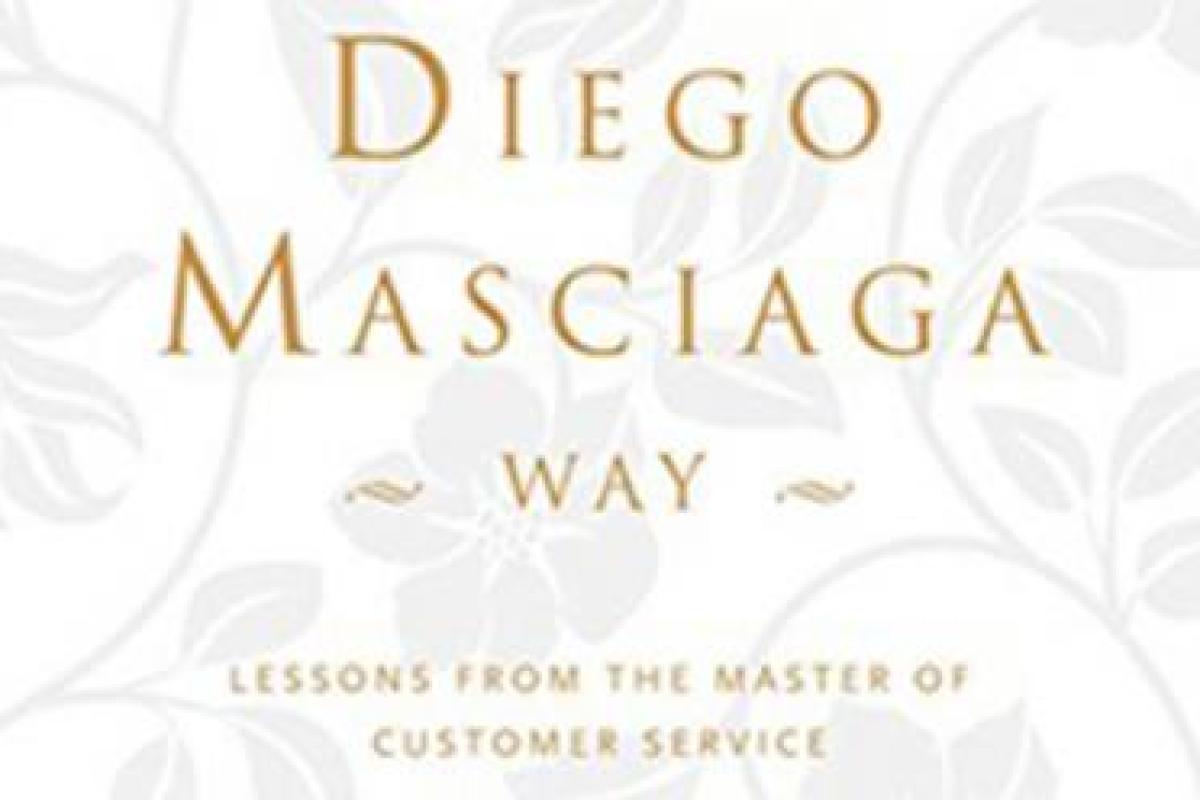For those of us lucky enough to dine occasionally at The Waterside Inn in Bray, it is clear that the front of house service is as important to the pleasure of dining as the food itself. The leadership of Diego Masciaga, the restaurant’s General Manager, is the secret ingredient in this. This book, subtitled “lessons from the master of customer service” offers many delicious insights for anyone who cares about customer experience.
Like any modern leader, although he does not use the jargon of marketing, “Mr. Diego” is a perfect example of “living the brand”, leading his team in delivering an integrated, brand-led customer experience. The brand is The Waterside Inn and its brand meaning is “pleasure”.
What can marketers learn from Diego Masciaga about bringing their brand meaning to life in a customer experience strategy?
- “Service is pleasing” for a brand that means pleasure, customer service cannot be based on the idea that service means ‘being a servant’. Service is about delivering pleasure to customers. Staff also need to experience the pleasure of being professionals, constantly aiming to master their art. This is neatly wrapped into the commercial success of the restaurant with the idea that every service interaction is a unique opportunity to please and pleasing inevitably leads to profits.
- The importance of brand-led language: diners are not ‘customers’ but ‘guests’. This language is not a marketing add-on. It represents the relationship between staff and diners and, when he says that diners who treat his staff badly are no longer considered ‘guests’, we know that this leader respects his staff as much as his customers.
- Pleasure demands intimacy: archetypally, pleasure is the territory of The Lover brand and psychology tells us that love requires three things: intimacy, passion and commitment. Intimacy is often misunderstood. It actually means knowing someone enough to always be one step ahead – anticipating their needs even before they can sense them. As Diego says. “Great service is when you don’t see it, but it is there. You don’t have to ask for anything”.
What can we learn about building longevity through brand customer experience strategy?
The Waterside Inn has held 3 Michelin stars continuously for more than 25 years. That doesn’t happen by luck or accident but by embedding practices and processes that will keep the brand consistent yet fresh.
- Staff selection: service staff are recruited according to “3Hs”: hunger, humility and honesty. Diego’s “You need to be hungry to be great at anything” reflects the other two dimension of the psychology of love: passion for getting better and mastering your profession and commitment to the hard work needed to keep improving and learning.
- Staff training: the approach to staff training is almost entirely through on-the-job training and constant feedback. But Diego understands that most staff learn by emulating a role model and he recognises that his own behavior defines what is expected from his team. In my experience, this is rare. Senior leaders in business often forget that when they complain about their own staff’s behavior that behavior is only a reflection of their own leadership. He also understands that great leaders need to be great storytellers and knows that staff will remember the service stories better than the theory. These learning experiences are institutionalised in the team briefings before each service - a time for reflection, team-building and shared understanding before the ‘performance’ begins.
- The importance of variety: service of this standard cannot be scripted or codified into tight guidelines. To achieve longevity, one needs to maintain a balance of consistency and variety. One of the best insights in this book is the importance of variety in helping you understand the customer experience from different perspectives and through different lenses. Diego extends this to, for example, arriving at the restaurant via different entrances on different days to see things from a different angle. Yet, he maintains an underlying consistency. “We do not change our values and beliefs. We just change the way we express ourselves” is something that many brand owners would love to be able to say.
Finally, ‘The Diego Masciaga Way’ is clear about the power of authenticity for any brand, but especially for a brand that means love and pleasure: “staff should not have a gap between the smile on their face and the feeling in their heart”. That’s a metric every business should have.
Chris Parker captures all of these messages and many more in an easy-to-read, engaging style, illustrating them with anecdotes and examples. His book is a pleasurable and involving glimpse at the values, beliefs and practices that underpin 3-star customer service.
Coincidentally, whilst I was devouring this book last weekend, I was also having one of the worst customer experiences of my life with one of the UK’s major online grocery retailers. Now you might be thinking “of course, a fantastic customer experience is only to be expected if you are paying premium prices at a 3-star restaurant but surely not from an online retailer?” But - let’s check the data: our household spend over the past year or so with the grocery retailer has been many times higher than our spend with The Waterside Inn.
If you are a marketing leader who cares about delivering an integrated, brand-led customer experience, you’ll find lots to enjoy in this book – and if you want to inspire your Customer Service staff, buy them all a copy – and consider sending them for lunch at The Waterside Inn!
Sandra Pickering is Founding Partner of opento.com a brand consultancy specialising in applying psychology to brand strategy and all aspects of brand-building.
